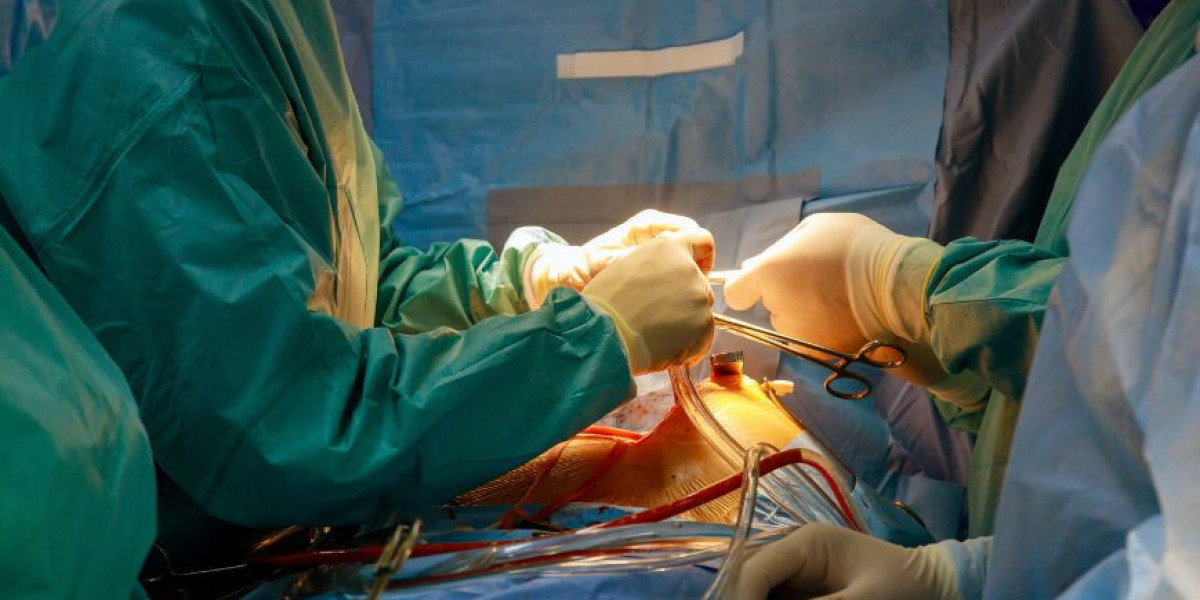The aortic valve replacement market continues to gain strong attention across the global healthcare landscape as cardiovascular diseases become increasingly prevalent and patient expectations for advanced treatment outcomes rise. Aortic valve replacement has emerged as one of the most transformative areas in cardiac care, helping patients restore heart function, improve quality of life, and reduce long-term complications associated with aortic valve disorders. As innovation accelerates, this market stands at the intersection of medical technology, clinical expertise, and growing healthcare needs.
Market Definition: Understanding Aortic Valve Replacement
The aortic valve replacement market refers to the ecosystem of therapies, medical devices, technologies, techniques, and clinical services designed to replace a damaged or malfunctioning aortic valve. This condition commonly arises due to factors such as aging, congenital abnormalities, infections, or chronic cardiovascular conditions that cause the valve to narrow or leak.
Aortic valve replacement can be performed through various clinical approaches, each tailored to patient needs, risk levels, and healthcare settings. The primary methods include:
Surgical Aortic Valve Replacement (SAVR)
A traditional yet highly trusted procedure, SAVR involves open-heart surgery to remove the damaged valve and implant a prosthetic one. This method is often recommended for patients who can tolerate major surgery and require durable long-term outcomes.
Transcatheter Aortic Valve Replacement (TAVR or TAVI)
One of the most significant advancements in modern cardiology, TAVR is a minimally invasive procedure that allows valve replacement through a catheter inserted via the groin or chest. It is especially suitable for older adults, high-risk patients, or individuals who may not withstand open-heart surgery.
Biological and Mechanical Valve Technologies
Prosthetic valves come in two major types:
Biological valves, made from animal tissues, which closely mimic natural valve function.
Mechanical valves, designed from durable synthetic materials, known for long-lasting performance but requiring lifelong medication.
The market also includes imaging systems, diagnostic tools, postoperative care solutions, and digital monitoring platforms that support the full patient pathway.
Value & Benefits: Why Aortic Valve Replacement Matters
The aortic valve replacement market plays a vital role in solving some of the most urgent challenges related to heart health. Aortic valve diseases can lead to breathlessness, chest pain, dizziness, and heart failure. Without timely treatment, they significantly impair quality of life and can become life-threatening.
Replacing the aortic valve offers several key benefits:
Restores heart function by ensuring proper blood flow from the heart to the rest of the body.
Improves patient longevity and wellness, especially when performed at the right time.
Reduces the risk of severe complications, including arrhythmias and cardiac arrest.
Empowers patients with treatment options, from minimally invasive procedures to advanced surgical techniques.
Enhances clinical efficiency, enabling hospitals and healthcare providers to deliver better outcomes with modern technologies.
Through these advantages, the market acts as a crucial component of contemporary cardiovascular care.
Relevance in Today’s World
Interest in the aortic valve replacement market is rising rapidly due to a combination of medical, demographic, and technological factors. As populations age, structural heart diseases are becoming more common. At the same time, greater awareness and earlier diagnosis have led to more patients seeking timely intervention.
Another major driver is the shift toward minimally invasive treatment preferences. Patients today expect shorter recovery times, reduced hospital stays, and procedures that support faster return to daily activities. TAVR has answered this demand, prompting a surge in clinical adoption and healthcare investment.
In addition, healthcare systems across the world are focusing on improving cardiovascular outcomes, lowering disease burden, and integrating advanced medical technologies—all of which support continued interest in the market.
Real-World Impact: Transformation Across Healthcare Stakeholders
The impact of aortic valve replacement extends far beyond the operating room. Its influence spans patients, clinicians, hospitals, medical device companies, and healthcare policymakers.
For patients, it offers hope, healing, and a renewed ability to lead active lives.
For cardiologists and surgeons, it brings advanced tools, precision technologies, and better patient management strategies.
For hospitals and clinics, it opens new opportunities to enhance cardiac care programs, improve service quality, and adopt cutting-edge technologies.
For device manufacturers, it fuels innovation, research collaborations, and the development of next-generation valves.
These real-world applications demonstrate how this market is shaping the future of cardiovascular treatment and establishing new standards of care.
Looking Ahead: Innovation Shaping the Future
The future of the aortic valve replacement market is deeply rooted in continuous innovation. Researchers and medical device developers are working toward more durable valves, improved biocompatibility, and enhanced minimally invasive procedures. Digital health tools—such as remote monitoring, AI-powered diagnostics, and precision planning software—are revolutionizing the way clinicians evaluate and treat valve conditions.
In parallel, patient-centric approaches are becoming central to treatment development. Personalized devices, advanced imaging techniques, and smart postoperative care models will likely redefine the patient journey.
As advancements continue, the aortic valve replacement market is poised to remain a foundational pillar of cardiac healthcare, bringing life-changing benefits to millions and reinforcing its essential role in modern medicine.




